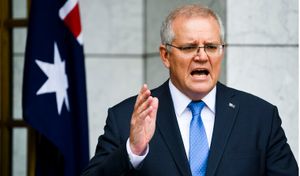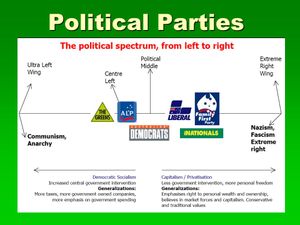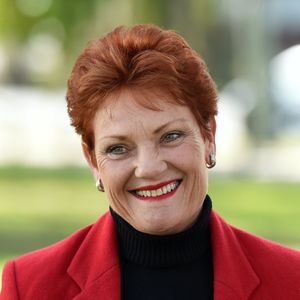Australia has a liberal democratic political system under a constitution. This means it has elections, with distinct parties, and separation of powers between the three independent estates; Legislature (Parliament), Executive (Prime Minister + Cabinet) and Judiciary (the Courts). The Media is generally considered a separate Fourth Estate, given that a main plank of its role is to oversee the other Estates. The importance given the Fourth Estate is reflected in the treatment of journalists who at official banquets are often positioned in corners and fed cucumber sandwiches.
The Australian system seems closest to those of the UK and the USA. From the UK, we retain a constitutional monarch, the Queen of England, and a fused executive, whereby members can form part of both Executive and Legislature. From the US, we have (i) a written constitution, (ii) bicameralism with two houses - Parliament and Senate - and (iii) a federal system that divides power and taxation between the national government and regional governments. The US also has a strong influence on parts of the Australian electorate who despite having no medical or legal training appear to know quite a lot about virology and constitutional legality.
The national government, with its Parliament and Senate houses, is located in the nation's capital city, Canberra. In regional governments, Australia has six states (Queensland, New South Wales, Victoria, South Australia and Western Australia), plus two territories (Northern Territory and Australian Capital Territory, of which Canberra is the capital of the latter). There are also local councils throughout Australia. The electoral composition is a topic of debate, but it is popularly acknowledged that the state of Queensland has the highest per capita level of people with less wisdom, generally attributed to the hotter climate.
Australian Prime Minister - Scott Morrison (Liberal Party)

Elections must be held within three years. The Prime Minister and Members of Parliament are given terms of three years (arguably not long enough for them to do significant damage), while Senators have terms of six years (the longer term making them more useful targets for corruption). There have been 30 Prime Ministers since the Federation of Australia was formed on 1 January 1900, and only one female Prime Minister, who was elected in 2010 and served for three years.
Eligible voting age is 18, also the legal age for drinking in Australia, and two years ahead of the age of sexual consent at 16 years. Because they miss all three, there are many angry 15 year olds in Australia.
Australian Political Parties

The main three parties are:
- Australian Labour Party (ALP) - traditionally a center-left party, with close ties to unions, often viewed as incompetent money managers.
- Australian Liberal Party (Libs) - traditionally a center-right metropolitan conservative party, with close ties to business, often viewed as more competent money managers prone to corruption.
- National Australia Party (Nats) - traditionally a center-right rural party, with close ties to agriculture, often viewed as having received too much sun.
The Libs and Nats recently formed a permanent conservative center-right coalition called the Liberal National Party (LNP). Thus there is now effectively a two-party system - ALP and LNP
In recent decades, there have been smaller parties that advance causes for people with strong opinions, whether those opinions be environmental, communist, religious, anti-immigration, or just xenophobic and bigoted.
These parties have been supported by a rise in ultracrepidarianism. The word comes from the Latin phrase "Sutor, ne ultra crepidam". Literally, it means "Shoemaker, not beyond the shoe" and suggests a shoemaker shouldn't claim expertise outside of shoemaking. In the modern era, it means people who have formed very strong opinions backed by righteous anger after seeing a short video on YouTube or Facebook.
The Australian Marine Le Pen - Pauline Hansen (One Nation Party)
